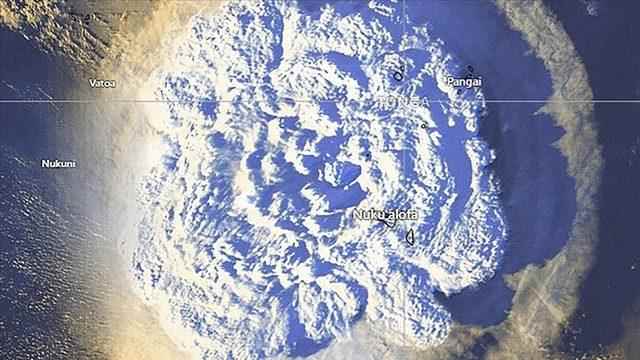According to the news of China Global Television Network (CGTN), in the article published in the journal Acta Oceanologica Sinica, it was stated that internal waves cause widths of up to hundreds of meters and crests of several hundred kilometers and significantly affect ocean environments.
IT ALSO TRIGGERS DYNAMIC PROCESSES IN THE OCEAN
Rarely observable inland waves in the oceans were detected by Chinese researchers observing using satellite images of the volcano’s eruption.
The research shows that volcanic eruptions not only cause fluctuations in the atmosphere, but also trigger dynamic processes such as internal waves in the ocean.
VOLCANIC EXPLOSION IN TONGA
The volcano, located on Hunga Ha’apai Island, 65 kilometers north of Nuku’alofa, the capital of Tonga, which consists of approximately 170 islands in the Pacific Ocean, became active on January 15 and started spewing ash, steam and gas.
After the explosion, “tsunami” warnings were issued for Tonga, New Zealand, the USA, Canada, Chile and Japan, and the tsunami hit almost all the islands in Tonga.
Authorities stated that the eruptions in the volcano were 7 times more severe than their activity on 20 December 2021.
“NEVER SEEN ANYTHING LIKE THIS BEFORE”
In a report published in August, it was stated that a high amount of water vapor was sent to the stratosphere, located 12 to 53 kilometers from the Earth’s surface, in the explosion, based on the detection of the Microwave Limb Siren device on the Aura satellite of the US Aerospace Agency (NASA).
In the statement made by NASA, it was stated that the water vapor mass in question contained enough water to fill 58,000 Olympic swimming pools, and it was noted that the main reason for the excess amount was that the explosion took place at a depth of 150 meters from the ocean surface.
Luis Millan, an atmospheric scientist at NASA’s Jet Propulsion Laboratory in Southern California, led the study examining the amount of water vapor sent by the Tonga volcano into the stratosphere. “We’ve never seen anything like this before.” had used the phrase.
In the statement, it was pointed out that the relevant steam is equal to 10 percent of the water already in the stratosphere and that it is likely to temporarily warm the earth’s surface because it traps heat.
The researchers reported that excess water vapor could remain in the stratosphere for several years, but the warming effect would be small and not expected to worsen current climate crisis conditions.
(AA)
